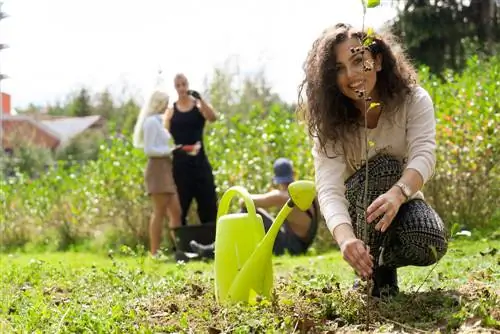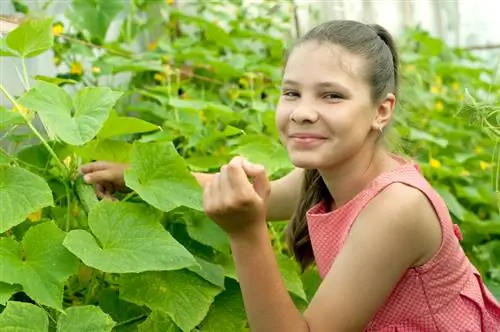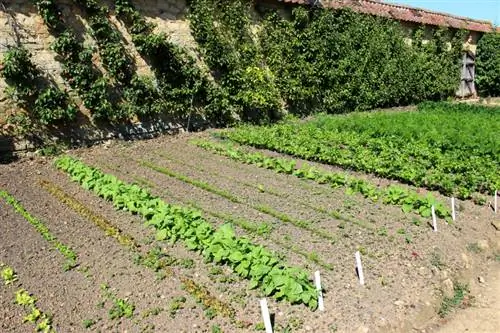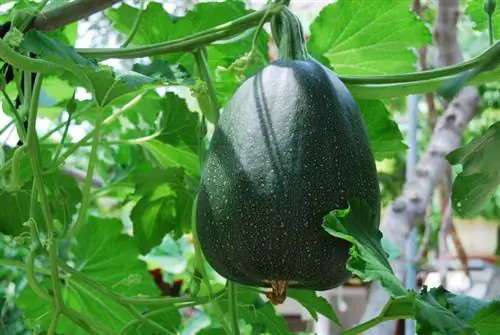- Author admin [email protected].
- Public 2023-12-16 16:46.
- Last modified 2025-01-23 11:22.
So many wonderful reports testifying how he althy black berries are! So why not find a free spot in your own garden. Concerns about whether the cultivation can succeed are understandable but not justified. The bush will grow and bear fruit!
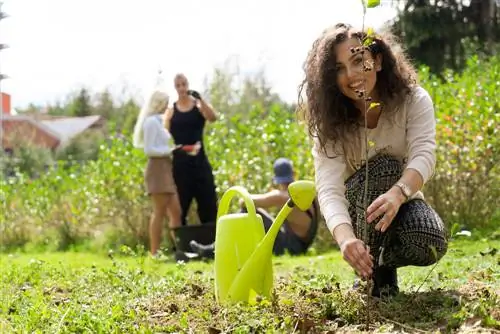
What are the conditions for successful Aronia cultivation?
Growing Aronia is easy: It is best to plant the hardy shrub in autumn in a sunny location with nutrient-rich, moist and slightly acidic soil. Aronia requires little care and produces its first berries after 2 years, which can be used in a variety of ways.
Where can I grow aronia?
Aronia bush, also called chokeberry, can grow permanently outside in the garden because the rose plant is hardy. It is undemanding in terms of location and soil. However, so that you can harvest a lot of aronia berries, offer it a place with the following characteristics:
- sunny to full sun
- nutrient-rich, moist soil
- rich in humus, containing clay and sand
- pH value from 6 to 6.5
- at least 1 m distance from other plants
Aronia is also suitable for container cultivation. As a hedge plant it can be placed closer together.
Where can I get a young aronia?
If you have a lot of time and patience, you can propagate your first aronia plant yourself (a long process) from seeds. If cuttings or root shoots from friends are available, propagation will be quicker. The easiest way to buy isin stationary or online stores The black chokeberry (Aronia melanocarpa) is popular. When purchasing, pay attention to good quality. Only then will the aronia produce a pleasing number of flowers and subsequently bear fruit.
When and how is planting done outdoors?
The ideal planting time for Aronia isAutumn, as soon as the branches are leafless. Spring and summer are also allowed, but the frosty winter is not. Bare-rooted goods should be planted promptly; container goods offer more scope in this regard. The individual planting steps in brief:
- Dig up the area, remove stones and weeds
- Dig a planting pit twice the size of the root ball
- Enrich the excavation with horn shavings (€52.00 on Amazon) or mature compost
- Water the ball of the pot well, then remove the pot
- cut back bare root produce by a third to half
- Cut roots, remove damaged ones
- plant in the middle, press down and water
What should you consider when growing in a pot?
The pot should be as large as possible and have several large drainage holes. Before planting, there should be adrainage layerthat is at least 5 cm high, because Aronia doesn't like waterlogging. The root ball needsWinter protection made of coconut mats.
What does optimal care look like?
Aronia needsalmost no care at all It rarely needs to be fertilized, then with organic fertilizer such as manure, compost or horn shavings. Watering is only done when it is extremely dry. Cutting is not necessary. Of course, dead or broken branches must be removed orbe shortened. Occasional thinning will also be necessary. Diseases and pests hardly play a role when growing the robust aronia.
When does cultivation also bring in crop yields?
The first berries, which are botanically not real berries, ideally appearin the second year It only becomes really worthwhile after six years. The bush then produces up to six kilograms of berries, which can be harvested from around mid-August until the first frost. They can only be eaten raw in small quantities. But aronia berries can be frozen, pressed into aronia juice or processed with sweet fruits to make jam and other delicacies.
Tip
Be sure to erect a root barrier for aronia
If your garden area is small or tightly planted, the aronia will cause problems soon after planting. Their roots tend to spread a lot. Even if it is more work, be sure to install a root barrier when planting!

